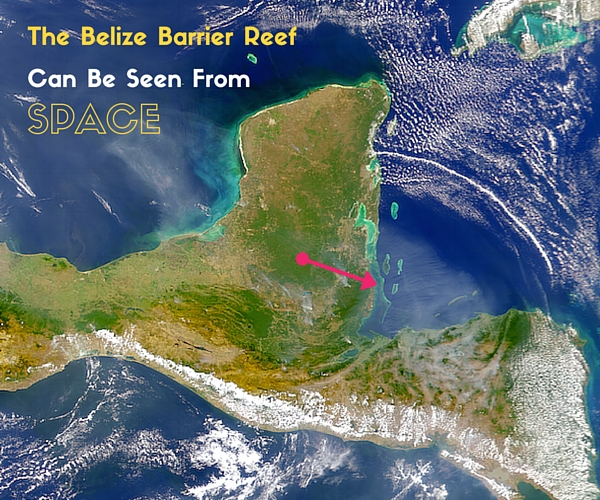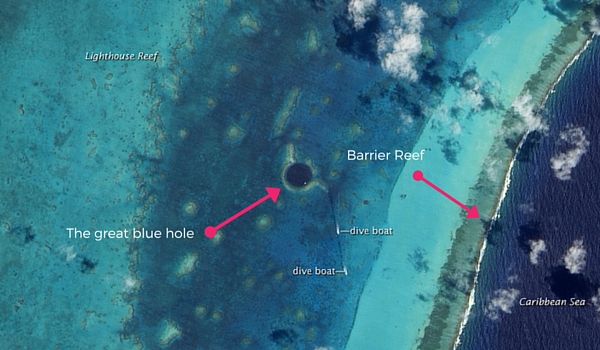6 Belize Barrier Reef Facts Every Scuba Diver Should Know About
What do you know about the Belize barrier reef system? Did you know it is the second largest barrier reef in the world?
When it comes to evaluating coral reefs in general, you will see many claims that are shared by others.

Many hold to the traditional approach put forth by Charles Darwin that there are three reef types. These being the Barrier Reef, The Atoll and the Fringing Reef. The Patch Reef is often mentioned as a fourth type. These are small reefs, longer than they are high, found in lagoons.
When we talk about facts of the Belize Barrier Reef system, it can get even more confusing as the Belize Reef is also part of the Mesoamerican Barrier Reef system that starts in Mexico at the Island of Contoy.
6 facts about the Belize Barrier Reef Reserve System
Although there is no doubt that the Great Barrier Reef of Australia is the largest (barrier) reef in the world, the Belize Barrier Reef without help from the rest of the Mesoamerican Barrier Reef is the second largest Barrier Reef on earth.
1. Because of Belize, the Mesoamerican Reef is considered a Barrier Reef
When we talk about the largest by size or type, things get confusing when we speak of the Mesoamerican Barrier Reef System (MBRS).
The Belize reef is just one section of the MBRS and comprises only 35% of its length but about 80% of its total area. While the MBRS is considered a Barrier system, the Barrier reefs are all within the Belize section.
2. The Belize barrier reef is one of two barrier reefs in the Western Hemisphere
Going by the scientific definition established by Darwin, there are only two Barrier Reefs in the Western Hemisphere, The Belize Barrier Reef and a small one off the coast of the Nicaragua at the island of Providencia. There are other claims of being a barrier reef in the Caribbean, such as the Florida Reef Track and the Andros Island Barrier Reef.
While tour companies and dive centers jump at promoting this barrier reef, I mean who would want to dive a fringing reef when they can dive a barrier reef, the Andros Conservancy, and Trust (ANCAT) does state that it is a fringing reef in their notes. ANCAT promotes it as a fringing barrier reef, noting that it does have features of a real barrier reef.
The Andros Island Reef does have some outstanding dive sites including deep wall dives around the Tongue of the Ocean. However, the reef characteristics are those of a fringing reef as it lacks the separation of a reef, lagoon and then shore of a barrier reef.
3. The BBR is the world’s largest double barrier reef
A double barrier reef is the rarest form of barrier reef with only six reefs carrying this classification. It is made when a barrier reef is developed outside of an existing barrier reef system.
The New Caledonia Barrier Reef system is the second largest double barrier reef in the world. You will often see this mentioned that the New Caledonia Barrier Reef is larger than Mesoamerican Barrier Reef, this is an area measurement and includes sections that are not barrier reefs.
4. The Barrier Reef of Belize Can Be Seen From Space
We often hear that the Great Barrier Reef is the only living organism able to be seen from space. The fact is that the Belize Reef can also be seen from space.

5. Three of the Four Coral Atolls outside of the Indo-Pacific are in Belize
Again the number of Atolls is another item scientist do not agree on. The established point is that four developed atolls fit the definition outside of the Indo-Pacific region, and three of them are in Belize, outside of the barrier reefs.
These three Atolls are:
- The Lighthouse Reef
- The Turneffe Atoll
- Glover’s Reef
These atolls are built on top of an ancient submerged mountain ridge.
There are about 20 “Caribbean Atolls” that share some of the traits of an atoll but according to the definition of a coral atoll, they come closer to what is known as a coral bank.
Also read: Visit the Lighthouse Atoll in Belize to Dive the Amazing Coral Reefs
6. The Belize barrier reef reserve system is a UNESCO World Heritage Site.
The BBRRS was listed as a UNESCO World Heritage Site in 1996 and includes seven designated protected marine reserves:
- Bacalar Chico National Park and Marine Reserve
- Blue Hole Natural Monument
- Half Moon Caye Natural Monument
- South Water Caye Marine Reserve
- Glover’s Reef Marine Reserve
- Laughing Bird Caye National Park
- Sapodilla Cayes Marine Reserve
Also read: How To Dive The Blue Hole in Belize the Easy Way?
Thes areas are only a small part of what is the barrier reef system in Belize, there are, however, additional marine areas not included in the seven represented above.
Outstanding areas such as the Hol Chan Marine Reserve, which is the most visited area by divers is not a part of the Heritage site.
Many of the characteristics of the designated heritage sites do also apply to the marine reserves and even the areas, currently not under protection.
Belize takes its responsibilities for marine conservation seriously. Well, not just marine, as an estimated 42% of the land mass is also protected at some level.
You better Belize it!
When it comes to size and who is larger than who, or what is an atoll, It is best to follow the advice that Abe Lincoln gave and not believe everything you read on the internet. What you can believe, and even better experience for yourself is the unique adventure that is diving in Belize.
This article is published by The Scuba Page, the online magazine for Scuba Dive lovers around the world. The Scuba Page is part of RUSHKULT: the online booking platform for adventure sports. Visit the RUSHKULT platform to book your next Scuba Dive training, guided trip and accommodation.

Leave a Comment